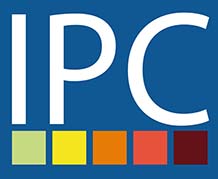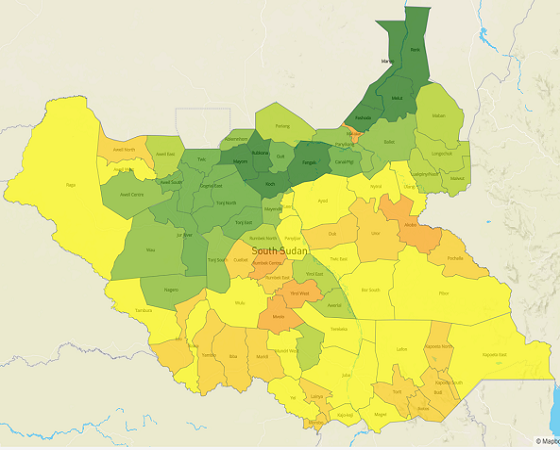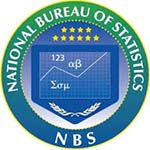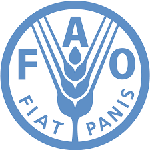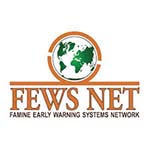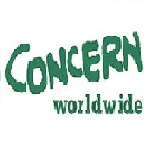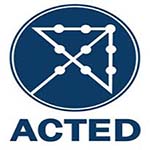Integrated Food Security Phase Classification (IPC)
The Integrated Food Security Phase Classification (IPC) is a set of standardized tools that aims at providing a "common currency" for classifying the severity and magnitude of food insecurity. This evidence-based approach uses international standards which allow comparability of situations across countries and over time. It is based on consensus-building processes to provide decision makers with a rigorous analysis of food insecurity along with objectives for response in both emergency and development contexts.
Reports
South Sudan IPC Analysis Key Messages, October 2022 to July 2023
Nov 4th 2022In the current analysis period of October to November 2022, an estimated 6.64 million people (53.6% of the population) are facing Crisis (IPC Phase 3) or worse acute food insecurity, of which 2.22 million people are facing Emergency (IPC Phase 4) acute food insecurity. An estimated 61,000 people are classified in Catastrophe (IPC Phase 5)acute food insecurity in Fangak, Canal/Pigi and Akobo of Jonglei State; Pibor County in the Greater Pibor Administrative Area. The most food insecure states between October and November 2022 where more than 50% of their populations are facing Crisis (IPC Phase 3) or worse acute food insecurity are Jonglei (68.0%), Unity (66.7%), Northern Bahr el Ghazal (61.9%), Upper Nile (58.5%), Warrap (57.1%), and Lakes (56.9%).
DownloadIPC South Sudan Acute Food Insecurity Malnutrition February July 2022 Report
Apr 19th 2022In the current analysis period of February to March 2022, an estimated 6.83 million people (55.3% of the population) are facing Crisis (IPC Phase 3) or worse acute food insecurity, of which 2.37 million people are facing Emergency (IPC Phase 4) acute food insecurity. An estimated 55,000 people are classified in Catastrophe (IPC Phase 5) acute food insecurity in Fangak, Canal Pigi and Uror counties in Jonglei State; Pibor County in Greater Pibor Administration Area; Tambura County in Western Equatoria State; and Leer and Mayendit counties in Unity State. The most food insecure states between February and March 2022 where more than 50% of their populations are facing Crisis (IPC Phase 3) or worse acute food insecurity are Jonglei (72.4%), Unity (67.6%), Warrap (62.9%), Northern Bahr el Ghazal (56.8%), Upper Nile (54.2%) and Lakes (52.0%).
DownloadJoint Press Release - IPC - 09 April 2022
Apr 19th 2022Food insecurity is likely to rise by seven percent across South Sudan in the coming months, compared to last year, according to a new United Nations report on food security. UN organizations are renewing the call for more humanitarian and livelihoods assistance to stave off looming hunger and enhance resilience.
DownloadSouth Sudan IPC Analysis Key Messages, January 2020
Feb 25th 2020In the analysis period of January 2020, 5.29 million people (45.2% of the population) are estimated to have faced Crisis (IPC Phase 3) or worse acute food insecurity, of which 1.11 million people faced Emergency (IPC Phase 4) acute food insecurity. About 40,000 people were classified in Catastrophe (IPC Phase 5) in the counties of Akobo1, Duk2 and Ayod3 in Jonglei State. Compared with the same time last year, the January 2020 levels of food insecurity reflect a 9% reduction4 in the proportion of population facing Crisis (IPC Phase 3) or worse acute food insecurity.
DownloadFood Security and Nutrition Report, July 2019
Oct 24th 2019The proportion of food insecure households during the harvest season has reached its historical peak (74 percent), if compared to same time in previous years. Moreover, only a 2 percent improvement is observed in the overall food security situation compared to the lean season of same year (i.e. August 2018), where 76 percent population is reported to be food insecure. The proportion of households facing severe food insecurity has almost doubled compared to December 2017. Overall, the level of food insecurity has reached its highest levels of 26 percent compared to the yearly trends during harvest season.
DownloadSouth Sudan IPC Analysis Key Messages, August 2019
Sep 12th 2019In August 2019, an estimated 6.35 million people (54% of the population) are classified in Crisis (IPC Phase 3) or worse acute food insecurity, among whom an estimated 1.7 million people are facing Emergency (IPC Phase 4) acute food insecurity and 10,000 people are in Catastrophe (IPC phase 5). Compared to the same period in 2018, there is a slight reduction in the proportion of people facing Crisis (IPC Phase 3) or worse acute food insecurity by an estimated 5%. However, high levels of acute food insecurity still persist in the country. In both periods, these estimates are in the presence of humanitarian food assistance. In the projection period of September to December 2019, the food security situation is expected to improve as seasonal harvests become available. During this period, an estimated 4.54 million people (39% of the population) will likely face Crisis (IPC Phase 3) or worse acute food. In the post-harvest period of January to April 2020, the food security situation will deteriorate as household food stocks start depleting and an estimated 5.5 million people (47% of the total population) are likely face Crisis (IPC Phase 3) or worse acute food insecurity. The projection analyses have both factored in the presence of likely humanitarian food assistance.
DownloadSouth Sudan IPC Analysis Key Messages, May 2019
Jun 16th 2019In May-July 2019, an estimated 6.96 million people1 (61% of the population) are likely to face Crisis (IPC Phase 3) acute food insecurity or worse, out of which an estimated 1.82 million people will face Emergency (IPC Phase 4) acute food insecurity and 21,000 will likely be in Catastrophe (IPC phase 5)2. This is historically the highest number of people in South Sudan ever to face Crisis (IPC Phase 3) acute food insecurity or worse. Compared to the January 2019 projection analysis of the May-July 2019 period, an additional 81,000 people are likely to slip into Crisis (IPC Phase 3) acute food insecurity or worse. This deterioration is largely associated with the delayed rainfall that is expected to affect the improvement in the availability of wild foods, fish and livestock products as well as delay the green harvest. Of the people estimated to be in Catastrophe in May-July 2019, 10,000 are in Canal/Pigi of former Jonglei State, 10,000 are in Cueibet of former Lakes State, and 1,000 are in Panyikang of former Upper Nile State.
DownloadSouth Sudan IPC Analysis Key Messages, January 2019
Feb 26th 2019In the current analysis period of January 2019, 6.17 million people (54% of the population) are estimated to have faced Crisis (IPC Phase 3) acute food insecurity or worse, out of which 1.36 million people faced Emergency (IPC Phase 4) acute food insecurity and 30,000 faced Catastrophe (IPC phase 5)1. The people in Catastrophe (IPC Phase 5) in January 2019 are found in four counties, namely: Canal/Pigi and Pibor (former Jonglei); Panyikang (former Upper Nile); and Cueibet (former Lakes). Large-scale humanitarian assistance is urgently needed to save lives and protect livelihoods in these counties. Compared with the same time last year, the January 2019 levels of food insecurity reflect a 13% increase in the population facing Crisis (IPC Phase 3) acute food insecurity or worse in the postharvest season.
DownloadSouth Sudan IPC Analysis Key Messages, September 2018
Sep 28th 2018Based on the September IPC analysis, it is expected that 6.1 million1 people (59% of the total population2) faced Crisis (IPC Phase 3) or worse acute food insecurity3 at the peak of the lean season (July – August), of whom 47,000 were in Catastrophe (IPC phase 5) and 1.7 million were in Emergency (IPC Phase 4). Food security has improved slightly with the green harvest in September relative to July and August, and further improvements are expected in the post-harvest period between October and December 2018 when the number of people in Crisis (IPC Phase 3) or worse is most likely to reduce to 4.4 million (43% of the total population), with 26,000 in Catastrophe (IPC Phase 5). However, an anticipated earlier than normal start of the lean season will result in an estimated 5.2 million (49% of the total population) people in Crisis (IPC Phase 3) or worse acute food insecurity between January and March 2019, with 36,000 in Catastrophe (IPC Phase 5). These estimates are in the presence of planned humanitarian food assistances.
DownloadSouth Sudan Food Security and Nutrition Monitoring Bulletin, Round 21
May 15th 2018Overall, 70 percent of households in South Sudan were found to be food insecure in December 2017, according to the Consolidated Approach to Reporting Indicators of Food Security (CARI)1 methodology. Among these households, 56 percent were moderately, and 14 percent severely, food insecure. This represents a slight improvement compared to the peak of the previous lean season (July – August 2017), when overall food insecurity stood at 76 percent (50 percent moderate and 26 percent severe). This improvement is mainly due to seasonality factors and the availability of harvest.
DownloadIPC South Sudan January-July 2018 Key Messages
Feb 28th 2018In January 2018, 5.3 million people (48% of the population) are estimated to be facing Crisis and Emergency (IPC Phases 3 and 4) acute food insecurity, out of which 1 million people are facing Emergency (IPC Phase 4) acute food insecurity. Compared with the same time last year, this reflects a 40% increase in the population facing severe food insecurity in the post-harvest season. Worsening food insecurity is primarily driven by protracted conflict and displacements, which have contributed to insufficient crop production (only 61% of the 2018 national cereal needs are met by the harvest), disruptions to livelihoods and persistent macroeconomic deterioration. Livelihoods have been further eroded by climatic shocks, such as prolonged dry spells and flooding, and pest infestations (e.g. Fall Armyworm).
DownloadSouth Sudan IPC September 2017 Key Messages
Nov 8th 2017South Sudan entered the harvest season in September 2017 with 6 million people (56% of the total population1) estimated to be severely food insecure2, out of which 40,000 are in Humanitarian Catastrophe at a household level (IPC Phase 5 ) and 2 million are facing Emergency (IPC Phase 4) food insecurity. Post-harvest gains in October-December 2017 are expected to reduce the number of severely food insecure people to 4.8 million (45% of the total population), with 25,000 in Humanitarian Catastrophe. However, an anticipated earlier than normal start of the lean season3 will result in an estimated 5.1 million (48% of the total population) people being classified as severely food insecure in January-March 2018, with 20,000 in Humanitarian Catastrophe. The worsening situation is attributed mainly to the protracted conflict that affected farming activities and the ongoing economic crisis.
DownloadSouth Sudan IPC News Release Juba June 2016
Jul 29th 2016Up to 4.8 million people in South Sudan – well over one-third of the population – will be facing severe food shortages over the coming months, and the risk of a hunger catastrophe continues to threaten parts of the country, three UN agencies warned today.
Download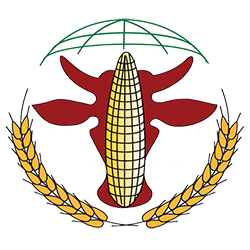 CLiMIS
CLiMIS 